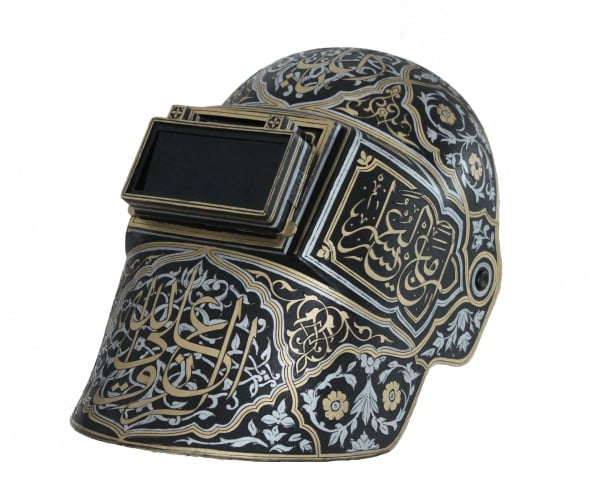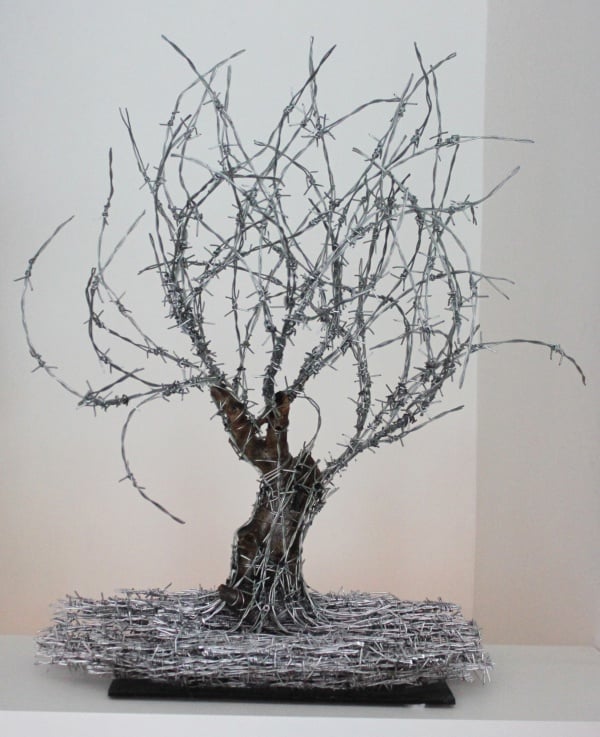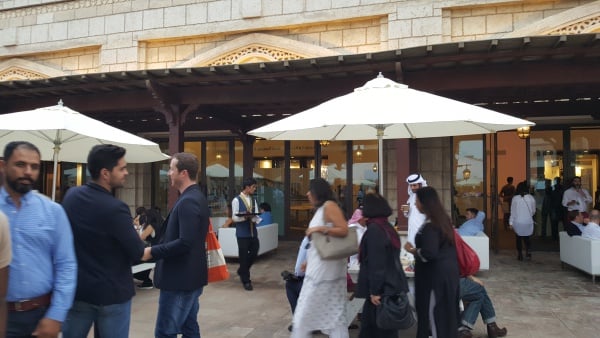Analysis
Art Dubai Kicks Off Grandly but Collectors Spend With Caution
This is a young art fair on its way to maturity.

Image: Courtesy of Art Dubai
This is a young art fair on its way to maturity.

Ari Akkermans

After a rather mellow 2015, the tenth edition of Art Dubai set off on Tuesday to a grandiose beginning: the halls in the Madinat Jumeirah were full to the brim, and the energy displayed at the fair, from the gallery booths to the commissions to the talks program and the social calendar, have demonstrated the vitality of a young art fair on the way to maturity.
New York dealer Harry Hutchinson, from Aicon Gallery, demonstrated an enthusiasm that was present throughout the fair. “We have been here since the beginning and we are happy to return every year,” Hutchinson told artnet News. “We understand what Dubai wants and the sales are always strong.” Aicon represents Pakistani-American artist Anila Quayyum Agha who was the sensation at Art Dubai 2015 and her work returns to the fair as a favorite for local collectors.
Agial Art Gallery from Beirut, one of the most established names in the Arab region and also a decade-long presence at the fair, reported that this has been their best year at Art Dubai thus far. They sold work by Abdulrahman Katanani and Ayman Baalbaki, some of the strongest mid-career artists in the Arab world, whose works sold in the range of $10,000-$40,000.
Local Dubai galleries also seemed enthusiastic. Sunny Rahbar from the Third Line reported very strong sales and Nadine Knotzer from Carbon 12 seemed satisfied but added that unlike previous years, there were not too many new faces among the public. Umer Butt from Grey Noise, another Dubai-based gallery, reported sales of three works by Pakistani artist Fahad Burki, for $8,500 each.

Ayman Baalbaki.
Image: Courtesy of Agial Art Gallery
Predictably enough, Marianne Boesky, a well-established New York gallery who returned to Dubai for the first time since 2012, did incredibly well. The gallery staged a solo presentation of Syrian-born artist Diana Al-Hadid who has a strong following among local collectors. They’ve already sold seven works by the artist between $40,000-$75,000.
Overall the sales were not spectacular for most exhibiting galleries we spoke with, although the recovery from last year was significant. Collectors are definitely spending, but they’re spending cautiously, and the trend seen in previous years is still prevalent: Works between $5,000 and $50,000 are the most popular, although a small number of works with six-digit figures did make the cut, such as Kehinde Wiley’s Portrait of Jose Alberto de la Cruz Diaz (2016), which sold for $180,000 by Galerie Daniel Templon.

Kehinde Wiley, Portrait of Jose Alberto de la Cruz Diaz (2016).
Image: Ari Akkermans
The Russian presence has begun to grow with three galleries returning for the second time. Ekaterina Iragui, from Galerie Iragui, reported strong interest in the works of Nikita Alexeev, one of Russia’s leading contemporary painters. Artwin Gallery, with outposts in Moscow and Baku, reported reserves on some of the works.
A number of European galleries seemed unhappy and their sales proved very slow, perhaps as a consequence of not taking the local art market seriously enough, or understanding its evolution.
Indian and Iranian galleries, on the other hand, were very energetic, and continued to grow in number, attracting crowds of visitors. Greek dealer Roupen Kalfayan, who is always optimistic, was also very happy about the fair, in spite of the economic circumstances back home.
In Dubai Modern, the curated section of the fair devoted to modern art from South Asia and the Middle East, things were a lot slower, but the section grew bigger and more compact this year, its third.

Abdulrahman Katanani.
Image: Courtesy of Agial Art Gallery
Some dealers in the modern section complained of very low attendance compared to the main fair, and reported weak sales, but that was not the case for everybody. Dubai gallery Lawrie Shabibi sold a 1980 work by Iranian artist Maliheh Afnan to a German foundation for £35,000 (roughly $49,500). Nevertheless, the fair retains its place as the most important art event of the year in the region. And given the privileged location of Dubai, the fair has begun to attract dealers, artists, and collectors from other emerging markets such as Africa, Latin America, and Eastern Europe.
“We are doing something different than everybody else,” fair director Antonia Carver, who took over the fair in 2010, told artnet News. Carver, who oversaw its transformation into a global fair, spoke about the future of Art Dubai after its first ten years. “Wherever I travel around the world, I find that the vast majority of the world—Africa, the Middle East, Central and South Asia—is not represented in art equally yet, so that makes our mission even more crucial, and Dubai more crucial as a meeting point.”
Successful like no other fair in bringing collectors from South Asia, despite Art Basel’s new Hong Kong fair, Art Dubai seems to be targeting other audiences too; the appointment of Pablo de Val as director of exhibitor relations, snatched from Zona Maco, is only one among many steps in that direction.

Art Dubai atmosphere.
Image: Ari Akkermans
The general feeling is that this was the best edition of the fair thus far, and most seem to agree. But the game is far from over and galleries still need to find new homes for a lot of their artwork. Well-known art world personalities—like curators Hans Ulrich Obrist and Germano Celant, artist Hito Steyerl, and MoMA’s Glenn Lowry—now make regular appearances. And though the fair is still small—there are less than one hundred galleries—its offerings are more diverse than what you’ll find elsewhere.
Will galleries like Marian Goodman, Chantal Crousel, or Gladstone return to Dubai? It is too early to tell, or even to know whether or not that is a significant indication of the fair’s prosperity and importance to the fair landscape. But it does seem as if Art Dubai will be around for a long time to come.